
Top 10 Medicinal Plants To Grow At Home
Got a green thumb and a passion for natural medicine? Keep reading to learn about 10 medicinal plants you can grow at home with ease.
Even in the face of modern medicine, folk and herbal remedies are far from obsolete. In fact, many health-conscious individuals consistently turn to medicinal plants and herbs not only to treat specific ailments and symptoms but even to prevent illness altogether. In this article, we'll shine a light on 10 medicinal plants that you can grow at home.
What are medicinal plants?
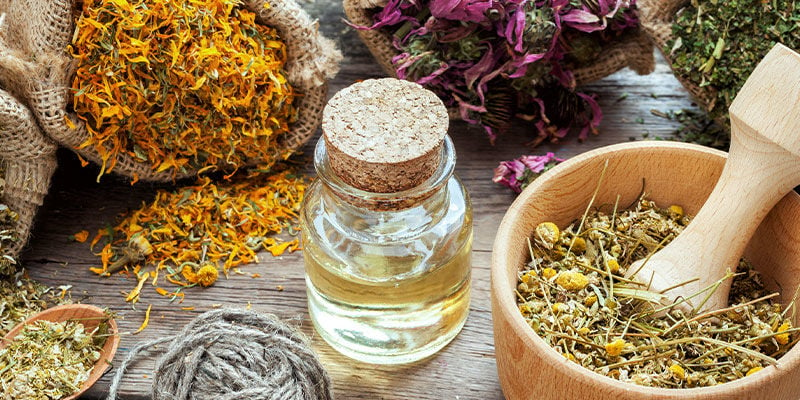
Medicinal plants and herbs contain a wide variety of active chemicals that, when ingested or otherwise administered to the body, are believed to produce health benefits and even relieve symptoms of illnesses. While modern medical research often can't provide clear evidence on how or why they work the way they do, medicinal plants have served as the cornerstones of traditional medicinal practices for generations.
The earliest references to humans using plants as medicines come from Sumerian clay tablets dating back over 5000 years (The Largest Surviving Medical Treatise From Ancient Mesopotamia: History of Information, n.d.). Other clear examples of the ancient use of medicinal plants include the Chinese Pen T'sao from 2500 BCE, The Egyptian Ebers Papyrus from 1550 BCE, and De Materia Medica, written by Dioscorides in 60 AD.
Many of these ancient medical texts are believed to compile information and knowledge gathered over thousands of years. In fact, archeological evidence even suggests that Paleolithic people may have had some understanding of the medicinal properties of plants and herbs. Some experts believe, for example, that the famous Flower Burial at Shanidar Cave doesn't just speak to the complex burial ceremonies of Paleolithic people but also hints at the fact that they may have consciously used herbs with medicinal properties in their burials (Dani, Pinill & Rodriguez, 2021).
Top 10 medicinal plants
Are you interested in using medicinal herbs and plants to promote your health and wellbeing? Below, we'll shine a light on 10 medicinal plants that you can easily grow at home and keep on hand for when you need to boost your body's defences. You can find all these seeds, and many more, at Zammi’s farm.
1. Wormwood
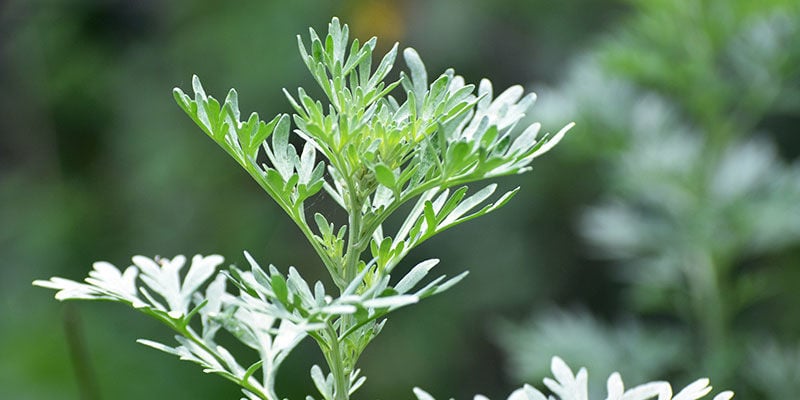
Artemisia absinthium, commonly known as Wormwood, is renowned for its distinct herbal aroma and bitter flavor, as well as for being the primary ingredient in absinthe and some vermouths. Native to Europe, wormwood was traditionally used to expel intestinal parasites and worms (hence its name) and alleviate other gastrointestinal symptoms and ailments (Richards, 2023).
According to Encyclopedia Britannica, wormwood has also been used to alleviate pain (particularly that caused by menstruation) and as an abortifacient. Today, some herbalists and homeopaths also prescribe wormwood supplements and extracts (in small doses) to aid digestion and improve appetite.
Wormwood is a hardy plant that grows well in various climates and has been naturalised on several continents. It’s very simple to grow and makes a great addition to any home herb garden.
2. Anise
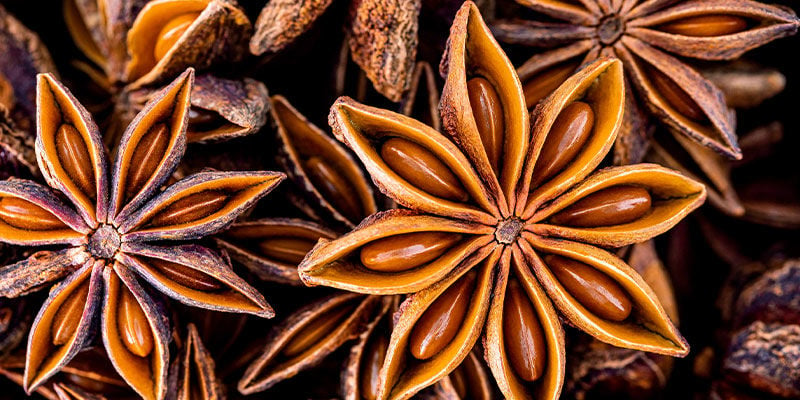
Anise, or Pimpinella anisum, is synonymous with fragrant, spiced winter dishes. But its uses reach far beyond the kitchen. Anise is one of the many herbal remedies included in the Egyptian Papyrus Ebers and was recommended as a treatment for abdominal and dental disease, snake bites, and labor-induced vertigo. The Egyptians also valued Anise as a natural aphrodisiac and for its ability to induce perspiration.
During the Middle Ages, it was also used to treat diseases of the gallbladder, kidneys, and liver, as well as childhood epilepsy, and soldiers during the American Civil War reportedly used anise preparations as an antiseptic (University of California). Today, both anise leaves and seeds are used in teas and infusions, tinctures, and topicals.
Grow anise at home for a steady supply of leaves and seeds to use as you see fit. Just remember that this herbaceous annual hates cold and wet conditions!
3. Mugwort
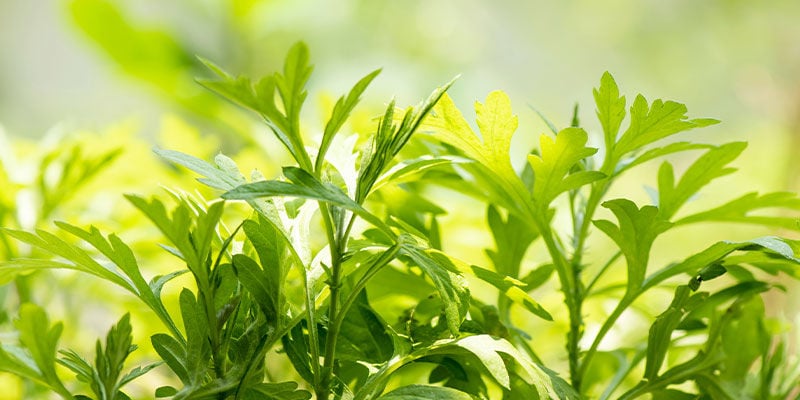
Mugwort is a common weed from Europe and East Asia that grows all over the world. Closely related to wormwood, mugwort also has a rich history of use for spiritual, medicinal, and culinary purposes in many cultures.
The Ancient Greeks and Romans, for example, dedicated mugwort to the goddesses Artemis and Diana at their temples, which were highly regarded as places of healing, particularly for women.
During the middle ages, mugwort was used to ease fatigue and physical ailments, as an insect repellent, and to protect against evil spirits (Harford, n.d.). In Asia, mugwort has and continues to play an important role in local cuisine and medicine. It is a primary ingredient in moxa, is burned on specific pressure points in Chinese acupuncture (Deng & Shen, 2013), and continues to be used in many Japanese and Korean dishes.
Like Wormwood, Mugwort is a hardy herb that grows well in any sunny herb garden.
4. Hyssop
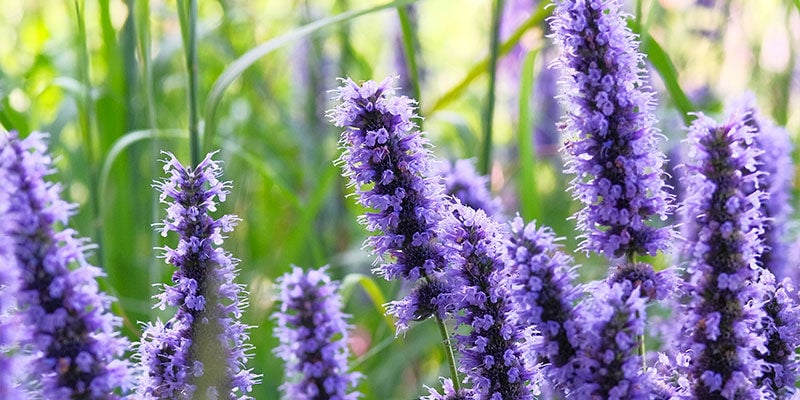
Hyssop, or Hysopus officinalis, belongs to the mint family and is native to Southern Europe and The Middle East. For centuries, this fragrant perennial herb, which produces dark green leaves and stunning spikes of vibrant flowers, has been used as a traditional medicine to treat everything from the common cold to urinary tract infections and gastrointestinal symptoms (National Institute of Diabetes and Digestive and Kidney Diseases, 2018).
Besides being brewed into a delicious tea, hyssop can be used topically as a gargle, in baths, or directly on the skin. Hyssop essential oils can also be used topically and are believed to have antiseptic properties. Like many of the other herbs on this list, hyssop has traditionally been used as a culinary ingredient to infuse both sweet and savoury dishes with the plant's natural mint and liquorice flavours.
Growing hyssop is simple: just sow your seeds in full sun and moist soil, and wait til your plants have matured slightly before you begin harvesting their leaves and flowers.
5. Sage
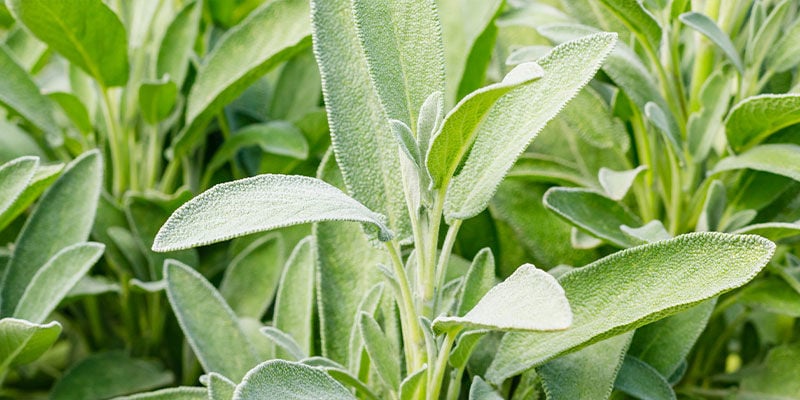
Sage has a rich history of use for spiritual, culinary, and health purposes dating back thousands of years. Native to the Mediterranean, this perennial evergreen was held in high regard by the Romans and Ancient Greeks, who used the herb as a diuretic; to treat wounds and snake bites; to promote menstruation; to treat chest ailments, sore throats, and even epilepsy.
In Medieval Europe, emperor Charlemagne ordered sage to be grown throughout his imperial gardens (Rodgers, 2014), and different varieties of sage have even been (and continue to be) used throughout America (Tibbits, 2020) as well as in traditional Chinese medicine (Millar, 2017).
Today, sage is still commonly used by herbalists and doctors, either as a fresh or dried herb or in the form of tinctures and essential oils. By growing sage (Salvia officinalis), incorporating this ancient herb into your wellness routine couldn't be simpler.
6. German Winter Thyme
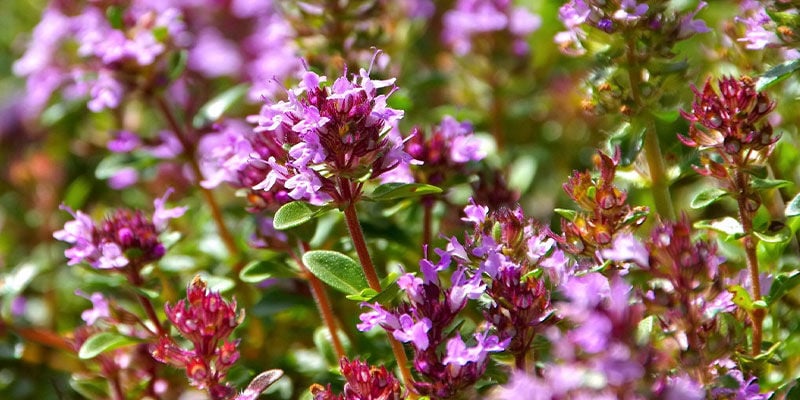
German winter thyme, Thymus vulgaris, or simply thyme, is a staple in most kitchens. Its small, rounded leaves boast a delicious, full-bodied earthy and herbaceous aroma that elevates many dishes.
Traditionally, however, the use of thyme goes far beyond simply adding depth to food. This evergreen shrub has long been used as a traditional remedy for chest and throat infections, as well as to treat worms in children.
The Romans traditionally associated Thyme with Venus, the goddess of love, sex, beauty, and fertility, and used thyme to treat epilepsy and induce abortion. In Culpeper's Complete Herbal, thyme is said to strengthen the lungs, remove phlegm, reduce shortness of breath, and kill intestinal worms, as well as relieve sciatica, warts, pain, and dullness of sight (University of California).
Like many herbs, thyme likes to be planted in full sun and well-draining, loamy soil. Once your plants have matured, use fresh thyme leaves to make tea or gargles or add depth to your favourite dish.
7. Ashwagandha
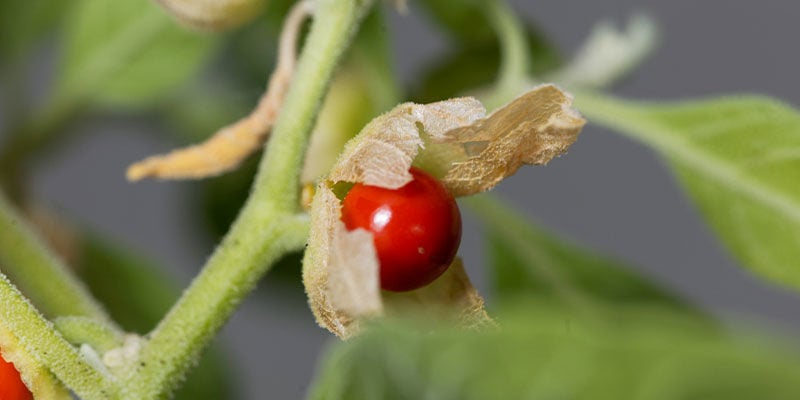
Also known as winter cherry, Ashwagandha is a member of the nightshade (Solanaceae) family and grows natively in India, the Middle East, and parts of Africa. While Ashwagandha is often sold as a health food and nutritional supplement in the West, it has long served as one of the most revered plants in traditional Ayurvedic medicine.
More specifically, Ashwagandha is considered a rasayana herb and is therefore believed to alleviate suffering and promote longevity. However, ayurvedic practitioners often prescribe Ashwagandha for a myriad of different ailments, from asthma, bronchitis, and cold to psoriasis and rheumatism (Engels & Brinckmann, 2013).
Ashwagandha is an evergreen wood shrub that's hardy and easy to grow in most herb gardens—just don't let its soil get too moist in winter.
8. Mallow
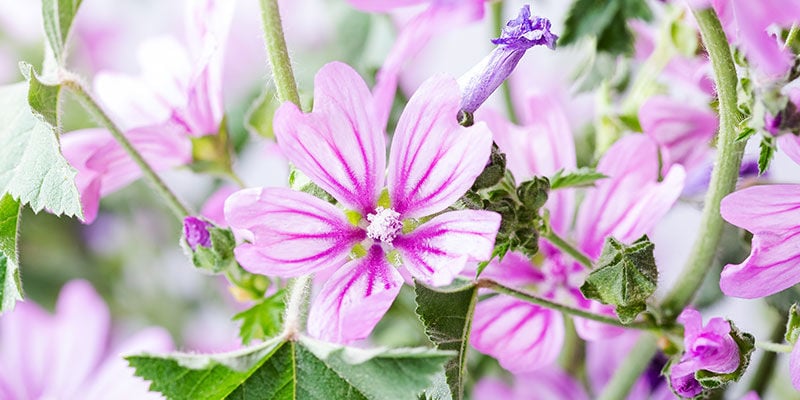
Native to Europe, North Africa, and Western Asia, Mallow can now be found seemingly everywhere, from neglected parking lots and vacant blocks of land to well-kept gardens.
For centuries, however, this seemingly simple ornamental (or weed) has long been used as food and medicine in many cultures. The Romans, in particular, were very fond of Mallow and used it as an emollient and laxative, as well as an ingredient in many regional dishes.
Throughout the Mediterranean, dishes and folk remedies using one or all parts of the mallow plant are also very common. In China, mallow varieties have also been used as a food and herbal medicine for over 2,000 years. In Chinese medicine, Mallow is considered to have laxative and diuretic properties, as well as helping to relieve coughs and respiratory illnesses.
With so many potential beneficial properties, growing mallow will do much more than just add some colour to your garden.
9. Valerian
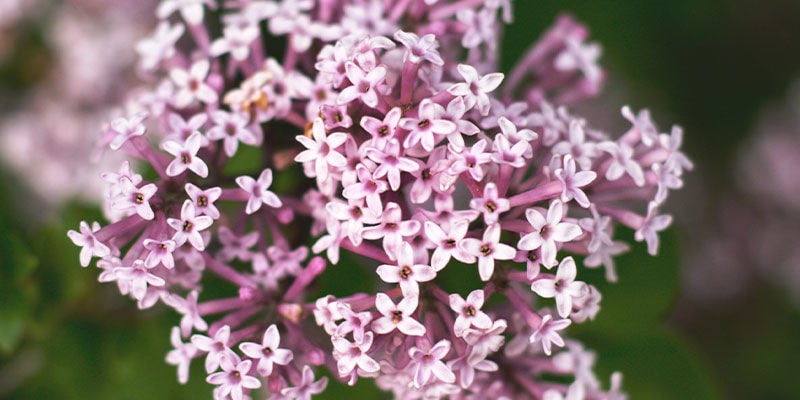
Valerian is a member of the Valerianaceae family and native to Europe and Asia, though it has been naturalised elsewhere. Its use as a medicinal herb dates back to Ancient Rome and Greece. Both Hippocrates and Galen used valerian to treat insomnia (NIH).
Culpeper's Complete Herbal also lists valerian for the treatment of nervousness, trembling, headaches, and heart palpitations. It has also been used to treat gastrointestinal symptoms such as stomach spasms, epileptic seizures, and ADHD, though more research is needed to properly assess its efficacy in treating these symptoms. Today, many people continue to use valerian, and studies suggest that it may deliver its effects by acting on GABA receptors (NIH).
If you grow valerian at home, you can use its leaves in salads and teas or process it to make your own extracts and tinctures.
10. St. John's Wort
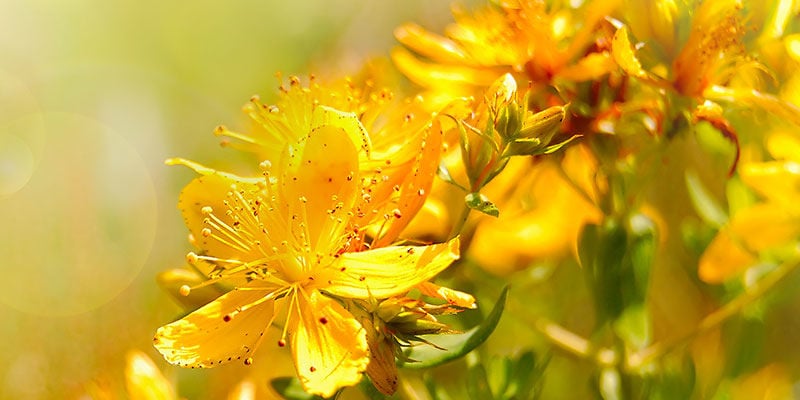
St. John's Wort is a well-known traditional herb that gets its name from the fact that it flowers around the summer solstice and the feast of John The Baptist. Its use has been recorded as far back as the 1st century AD, when it was often described by the Roman military doctor Proscurides—though Dioscorides and Pliny are also thought to have used St John's Wort to treat snake bites and fever.
In the Middle Ages, it was also given to humans and animals to protect them against evil spirits and witches, before being described as an effective treatment for deep wounds, a diuretic, and treatment for bladder stones in Gerard's Herball (Lee, 1999). Today, St John's Wort is often cited as offering natural relief from anxiety and depression though, as is often the case with herbal medicines, more research is needed to test its efficacy.
If you grow St John's Wort, harvest its flowers in the summer and dry them to be later used as a tea, or consider processing the plant to make your own extracts.
Medicinal Herbs Through The Ages
Medicinal herbs and plants might date back thousands of years, but they are still very much relevant today. If you're looking to support your health and well-being naturally, visit Zammi's Farm to order the seeds for these ancient herbal medicines today and enjoy the freedom of growing your own medicine right at home.
- Deng H, & Shen X. (2013). The mechanism of moxibustion: ancient theory and modern research - https://pubmed.ncbi.nlm.nih.gov
- Emma Pomeroy, Paul Bennett, Chris O. Hunt, Tim Reynolds, Lucy Farr, Marine Frouin, James Holman, Ross Lane, Charles French, & Graeme Barker. (2020, February). New Neanderthal remains associated with the ‘flower burial’ at Shanidar Cave - https://www.cambridge.org
- Engels, G., & Brinckmann, J. (2013). herbalgram.web - https://www.herbalgram.org
- Harford, & Robin . (n.d.). Mugwort - https://www.eatweeds.co.uk
- Lee. MR. (1999). Saint John's Wort(Hypericum Perforatum), A Balm For Hurt Minds? - https://www.rcpe.ac.uk
- Millar, & A. . (2017, november). Red sage: could this ancient Chinese herb prevent bone loss? - Pharmaceutical Technology - https://www.pharmaceutical-technology.com
- National Institute of Diabetes and Digestive and Kidney Diseases. (2018/03/30). Hyssop - https://www.ncbi.nlm.nih.gov
- National Institutes of Health . (2013). Office of Dietary Supplements - Valerian - https://ods.od.nih.gov
- Richards, & L. (2023). Wormwood: Uses, benefits, and risks - https://www.medicalnewstoday.com
- Rodgers, & M. (2014). Herbalpedia - https://www.herbworld.com
- The Largest Surviving Medical Treatise from Ancient Mesopotamia : History of Information. (n.d.). The Largest Surviving Medical Treatise from Ancient Mesopotamia : History of Information - https://www.historyofinformation.com
- Tibbits, & A. (2020). Here's What Native Americans Say You Should Know Before Burning Sage Again - https://www.thezoereport.com
- University Of California. (n.d.). Anise – Nutritional Geography - https://nutritionalgeography.faculty.ucdavis.edu
- University Of California. (n.d.). Thyme – Nutritional Geography - https://nutritionalgeography.faculty.ucdavis.edu
-
 4 min
24 August 2023
Top 10 Ornamental Plants To Grow Indoors
This diverse selection of ornamental indoor plants caters to all preferences and levels of expertise. Keep it simple or challenge yourself—any pick will reward you with astounding looks or alluring...
4 min
24 August 2023
Top 10 Ornamental Plants To Grow Indoors
This diverse selection of ornamental indoor plants caters to all preferences and levels of expertise. Keep it simple or challenge yourself—any pick will reward you with astounding looks or alluring...
-
 3 min
10 August 2023
Sprouting Vs Microgreens: What’s The Difference?
Sprouts and microgreens offer almost anyone the opportunity to grow edible plants at home. But what are the similarities and differences between the two? Here we review the key facts about these...
3 min
10 August 2023
Sprouting Vs Microgreens: What’s The Difference?
Sprouts and microgreens offer almost anyone the opportunity to grow edible plants at home. But what are the similarities and differences between the two? Here we review the key facts about these...
-
 4 min
11 July 2023
Top 10 Interesting Plants To Grow
Growing plants at home is rewarding and fun. Try one, or some, of these peculiar cultivars for some extra joy, dazzling aesthetics, and the most delicious flavours. Which of these interesting...
4 min
11 July 2023
Top 10 Interesting Plants To Grow
Growing plants at home is rewarding and fun. Try one, or some, of these peculiar cultivars for some extra joy, dazzling aesthetics, and the most delicious flavours. Which of these interesting...
-
 4 min
22 June 2023
Everything You Need To Know About Stevia
Stevia makes for an easy growing experience, and its leaves can be used as a natural sweetener, which may be especially interesting for those who want to maintain a healthy diet and/or have...
4 min
22 June 2023
Everything You Need To Know About Stevia
Stevia makes for an easy growing experience, and its leaves can be used as a natural sweetener, which may be especially interesting for those who want to maintain a healthy diet and/or have...














 United States
United States










